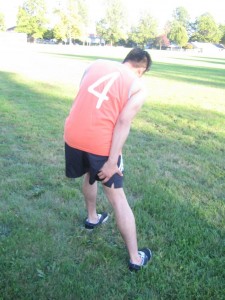Hamstring tendonitis arises if soft tissues linking the back-thigh muscles to the knee, pelvis and lower part of the legs are inflamed. The condition is usually caused by overuse and results to acute pain that subsides with rest or with first aid care. Most can resume regular activities after a week or so.
What are the signs?
The usual indications of hamstring tendonitis include the following:
- Burning, sharp pain
- Achiness or dull throbbing
- Muscle and joint weakness
- Joint and muscle stiffness
- Inflammation or swelling
Generally, the RICE method is used for 72 hours to manage the symptoms.
The symptoms can worsen if the individual continues with activity and often severe after prolonged periods of inactivity such as sitting or sleeping.
Management of hamstring tendonitis
Generally, the RICE method is used for 72 hours to manage the symptoms.
The cold causes the blood vessels to constrict, thus reducing the flow of blood and inflammation. An ice pack must be applied up to 10 minutes at a time. After a 20-minute break, it can be reapplied for a few more times as needed.
Compression and elevating the site also reduces the inflammation by lowering the blood flow to the area.
Over-the-counter non-steroidal anti-inflammatory drugs (NSAIDs) can also alleviate the symptoms days after the injury. In case severe pain persists for more than a few days or does not respond to basic care, a doctor must be consulted.
Recovery
In most cases, it requires several days for the individual to feel significant relief. It can take up to 6 weeks or longer to feel entirely better.

